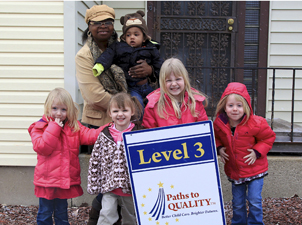
It takes a Village to Shelter Families
Denise Andorfer
July 19, 2017
As we await decisions on federal funding for the Continuum of Care program from the Department of Housing and Urban Development, we urge Dr. Ben Carson to take a look at programs around the country that are working to end family homelessness. We have learned from the past that vouchers only create a temporary band-aid for most where homelessness is a symptom of other issues. What we have found over the last four years in this grassroots initiative is that most families are hard working and just need a livable wage and assistance with two key elements that spiral families into unemployment. Those two key elements are a lack of transportation and affordable childcare.
In 2006, the theory was a shelter stay costs $47,000 annually to keep a family housed, which in comparison to paying their rent seems like the perfect solution. We housed 55 families in Vincent House in a 12 month period for $10,000 per year. This included housing plus intensive supportive services including case management and daily classes in the areas of financial literacy, employment readiness, wellness and general life skills. We also attend to our resident’s mental health needs by providing on-site counseling. We provide and/or partner with other agencies to tackle obstacles in the areas of physical limitations, childcare, and transportation needs.
One problem for sheltering families in the past was that many programs around the country were not set up to offer on-site solutions to address many common barriers such as employment, financial literacy, mental health, lack of childcare and transportation. They were costly and allowed families to stay for up to two years while families stayed stagnant in their plight. Most did not engage key community partners such as hospitals, mental health agencies, and corporations to provide in-kind services. Most importantly they did not create relationships, which is what ultimately will help the families we serve.
Relationship-based care often provides an avenue to a spiritual awakening that one is competent, encouraged and most of all loved. An investment from the community into a family helps them succeed. Most of our parents have been victims of childhood trauma. They are resourceful and hardworking, but the system is stacked against them – ‘Work harder and lose your government benefits and be worse off than when you didn’t work or worked part time.’
We have a five year, post-shelter program that enables families to live in one of our 35 rental homes as they continue to work to pay off debt, improve their employment situation, and improve their credit scores. Vincent Village brokers $95,000 in private rental subsides for families who are doing what they need to be doing – working to become more self-sufficient. Utilities are kept affordable because we can utilize HOME Funds. During this transition, families have a team of people working on their behalf.
We have transformed a neighborhood, but yes, it does take a Village – private funders, businesses, volunteers and churches. In our time, we have never seen a family be able to afford market rent after a rapid rehousing voucher. It’s time to take a look at the best transitional programs in the country that offer new and innovative strategies, and invest in lasting impact on future generations not temporary, quick fixes.








